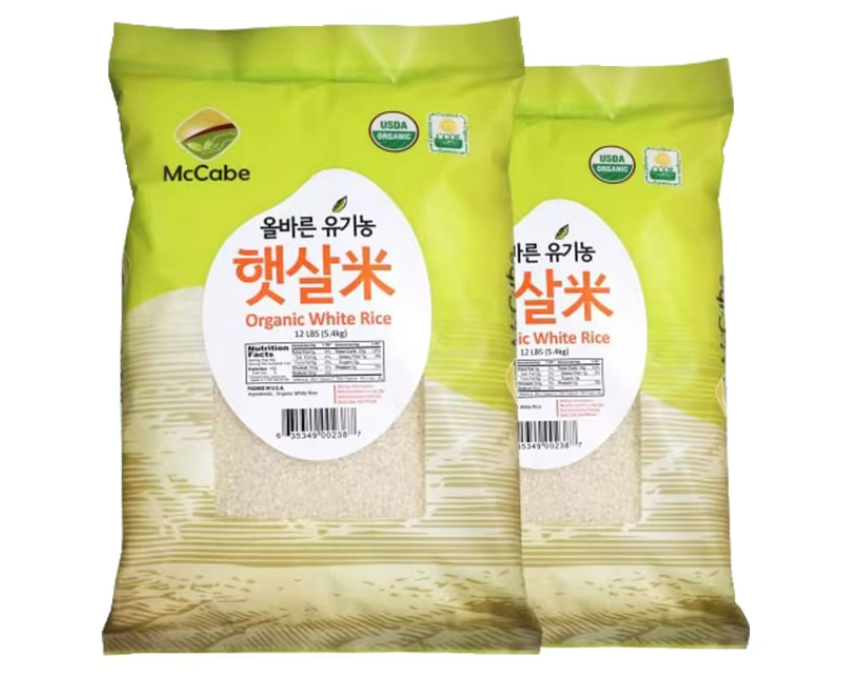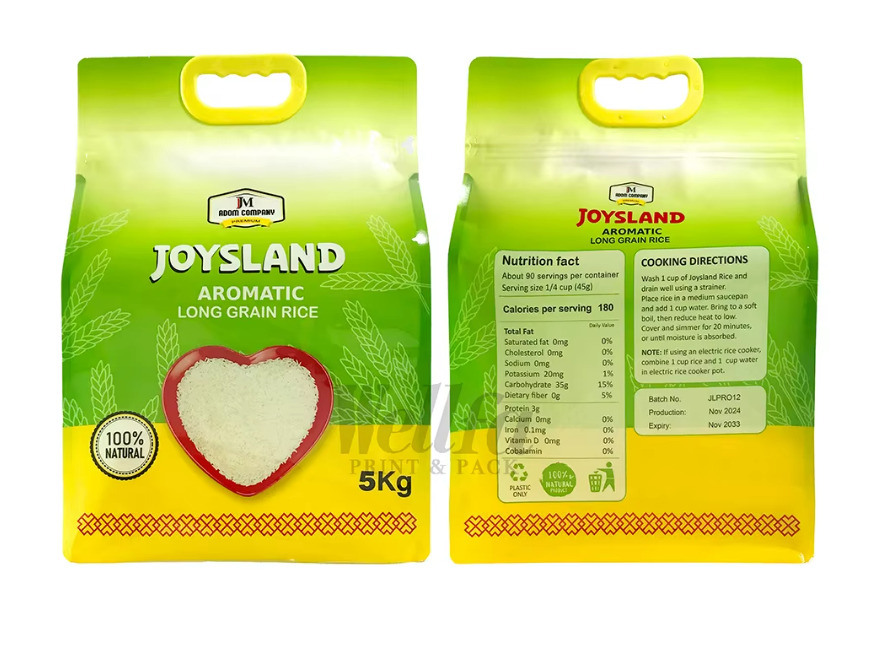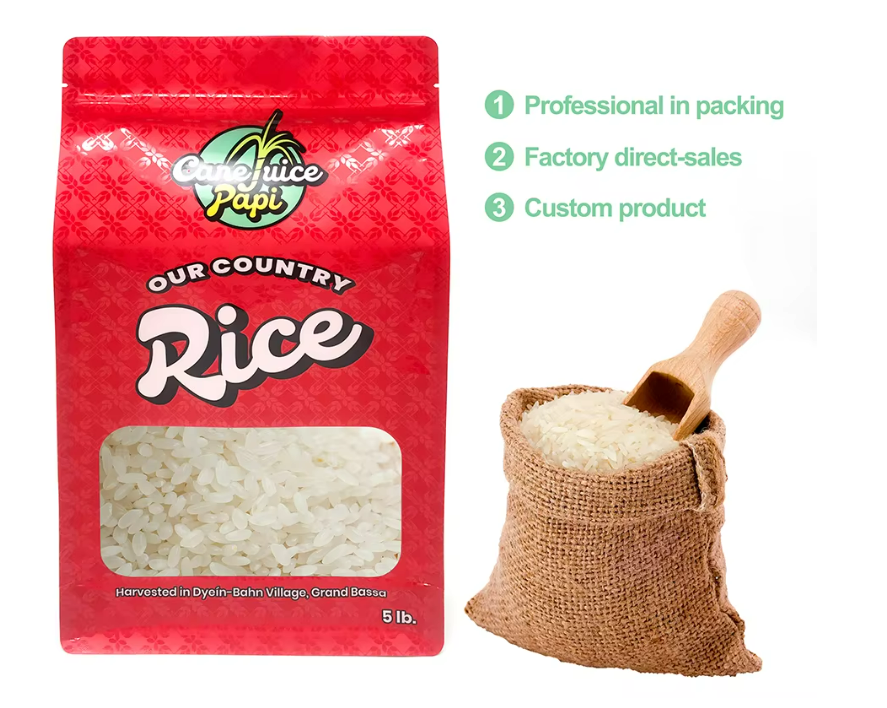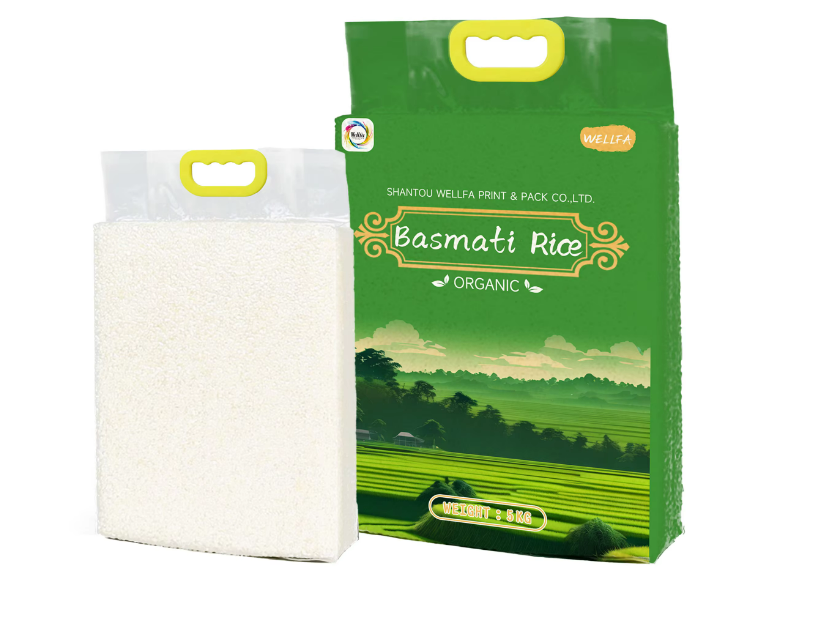Common Materials Used in Rice Packaging Bags
Rice is one of the most consumed staple foods globally, and its packaging plays a vital role in ensuring the product remains fresh, safe, and appealing to consumers.
The packaging must protect the rice from external factors such as moisture, pests, and contamination while maintaining the integrity and quality of the grains during transportation and storage.
The choice of materials for rice packaging bags is crucial, as it affects not only the durability and shelf life of the product but also the brand image and consumer experience.
In this article, we will explore the common materials used in rice packaging, their characteristics, and how companies like Kexin Packaging provide solutions that meet the functional, aesthetic, and environmental requirements of modern packaging.




1. Key Considerations for Rice Packaging Materials
Before diving into the specific materials, it’s important to understand the essential factors that influence the choice of rice packaging materials:
Moisture and Oxygen Barrier: Rice is susceptible to moisture absorption, which can lead to spoilage, mold growth, or loss of quality. Packaging must offer an effective barrier to prevent moisture and oxygen penetration.
Pest Protection: Packaging materials should be strong enough to prevent pests, such as insects or rodents, from entering the bag and damaging the rice.
Strength and Durability: Rice is a heavy product, and its packaging must withstand rough handling during transportation and storage without tearing or breaking.
Printing and Branding: Rice packaging is also a marketing tool. It must be easy to print on, allowing for high-quality branding and product information to be displayed clearly.
Sustainability: With growing environmental awareness, many companies are shifting towards sustainable packaging solutions that reduce waste and the environmental impact of plastic packaging.
2. Common Materials for Rice Packaging Bags
Several materials are commonly used for rice packaging, each offering specific benefits in terms of barrier protection, strength, and sustainability. The following are some of the most widely used materials:
a. Polypropylene (PP) Woven Bags
Polypropylene (PP) woven bags are one of the most commonly used materials for rice packaging, particularly for larger quantities such as 5 kg, 10 kg, or 50 kg bags. These bags are made by weaving polypropylene tapes together, forming a strong, durable fabric that can withstand heavy loads.
Characteristics of PP Woven Bags:
- Strength and Durability: PP woven bags are extremely strong and resistant to tears, punctures, and other types of damage, making them ideal for transporting and storing large quantities of rice.
- Breathability: Although these bags are strong, they are also breathable, which can help prevent moisture buildup within the bag.
- Cost-Effective: PP woven bags are relatively inexpensive to produce, making them a cost-effective solution for bulk rice packaging.
- Reusability: These bags can be reused, which is a plus in terms of sustainability.
- Printable Surface: They provide a suitable surface for printing, allowing for clear branding and labeling.
Kexin Packaging frequently uses PP woven bags for rice packaging due to their durability and affordability, especially for bulk rice sales in markets where transportation and handling conditions can be harsh.
b. Low-Density Polyethylene (LDPE) Bags
Low-Density Polyethylene (LDPE) bags are another common material used for rice packaging. LDPE is a flexible, lightweight plastic that offers good moisture resistance. These bags are often used for packaging smaller quantities of rice, typically 1 kg to 5 kg, and are sometimes used as an inner liner in combination with other materials.
Characteristics of LDPE Bags:
- Moisture Resistance: LDPE provides excellent protection against moisture, preventing rice from absorbing water or humidity from the environment.
- Transparency: LDPE bags can be transparent, allowing consumers to see the product inside, which can enhance the appeal of the packaging.
- Heat-Sealable: These bags can be heat-sealed, ensuring that the rice remains airtight and protected from external contaminants.
- Flexible and Lightweight: LDPE bags are lightweight, which helps reduce shipping costs and makes them easy to handle for consumers.
- Less Durable: While LDPE is moisture-resistant, it is less durable than PP woven bags and may not be suitable for large quantities or rough handling.
For retail rice packaging, Kexin Packaging often combines LDPE with other materials in multilayer packaging to achieve a balance of moisture protection and strength.
c. BOPP (Biaxially Oriented Polypropylene) Laminated Bags
BOPP laminated bags are an enhanced version of the PP woven bags. In these bags, a layer of BOPP film is laminated onto the outer surface of the PP woven fabric. This material combination offers both the strength of PP woven bags and the high-quality printing capabilities of BOPP film.
Characteristics of BOPP Laminated Bags:
- Excellent Printability: BOPP film provides a smooth surface for printing, allowing for vibrant and detailed graphics, which can help rice brands stand out on store shelves.
- Moisture and Oxygen Barrier: The laminated BOPP layer improves the bag’s barrier properties, protecting the rice from moisture, oxygen, and contaminants.
- Durability: These bags retain the strength of PP woven bags, making them suitable for transporting large quantities of rice.
- Pest Protection: The laminated surface adds an additional layer of protection against pests and insects.
- Aesthetic Appeal: BOPP laminated bags look more polished and professional, enhancing the overall brand image.
Kexin Packaging leverages the advantages of BOPP laminated bags for clients looking to combine durability with premium branding and product presentation, particularly for higher-end or branded rice products.
d. Multilayer Paper Bags with Plastic Liners
In some markets, multilayer paper bags are used for rice packaging, particularly for organic or premium rice products. These bags are often combined with an inner plastic liner, usually LDPE, to provide moisture protection while maintaining an eco-friendly outer appearance.
Characteristics of Multilayer Paper Bags:
- Eco-Friendly: Paper is biodegradable and recyclable, making it a popular choice for environmentally conscious consumers and brands.
- Good Printability: Paper bags offer an excellent surface for high-quality printing, which can help create a natural, earthy brand image.
- Moisture Protection with Liners: While paper alone doesn’t offer sufficient moisture resistance, combining it with a plastic liner ensures that the rice stays protected from humidity and water.
- Less Durable: Paper bags are less durable than plastic options and may not be suitable for very large quantities or rough handling.
Kexin Packaging offers multilayer paper bags with plastic liners as part of its eco-friendly packaging solutions, particularly for organic or premium rice brands looking to reduce their environmental impact.
3. Sustainable Packaging Solutions
As consumer demand for sustainable packaging grows, more brands and packaging companies are exploring eco-friendly materials for rice packaging. These include biodegradable plastics, compostable materials, and recyclable solutions.
Kexin Packaging is at the forefront of this trend, developing and offering sustainable packaging options that minimize environmental impact while ensuring that rice remains fresh and protected. These solutions may involve down-gauging plastic materials (reducing thickness without compromising strength) or exploring alternative materials like biodegradable films.
Conclusion
The materials used in rice packaging bags are chosen based on a variety of factors, including the product’s need for moisture protection, strength, pest resistance, and branding opportunities. Whether it’s the strength and durability of PP woven bags, the moisture resistance of LDPE, or the printability of BOPP laminated bags, each material has its specific advantages. Companies like Kexin Packaging provide tailored solutions to meet the diverse needs of rice producers, ensuring that the packaging not only protects the product but also enhances its marketability.
As sustainability continues to shape the packaging industry, eco-friendly materials are becoming increasingly important, and Kexin Packaging is leading the way in developing innovative, sustainable solutions for rice packaging.
You can visit our website to know more about our flexible packaging pouch:
